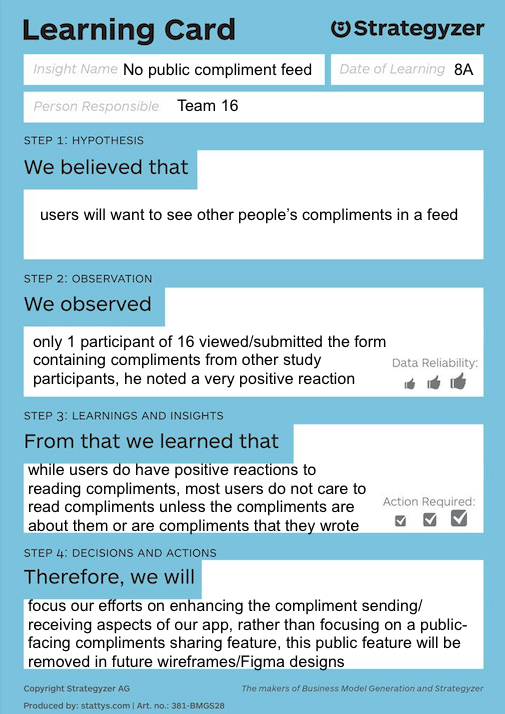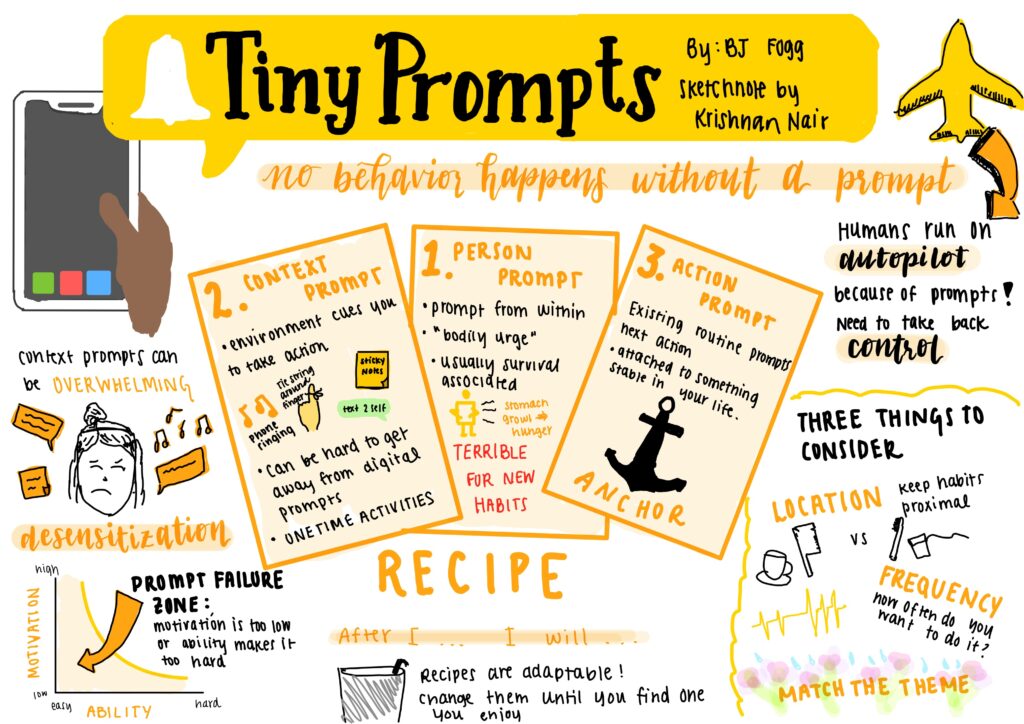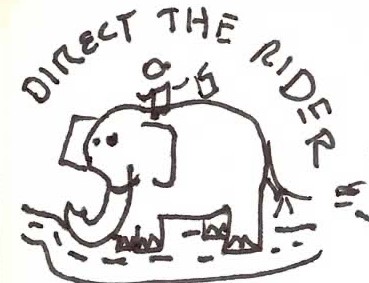We ran two assumption tests as outlined in our 6B blog post.
Compliment Reactions
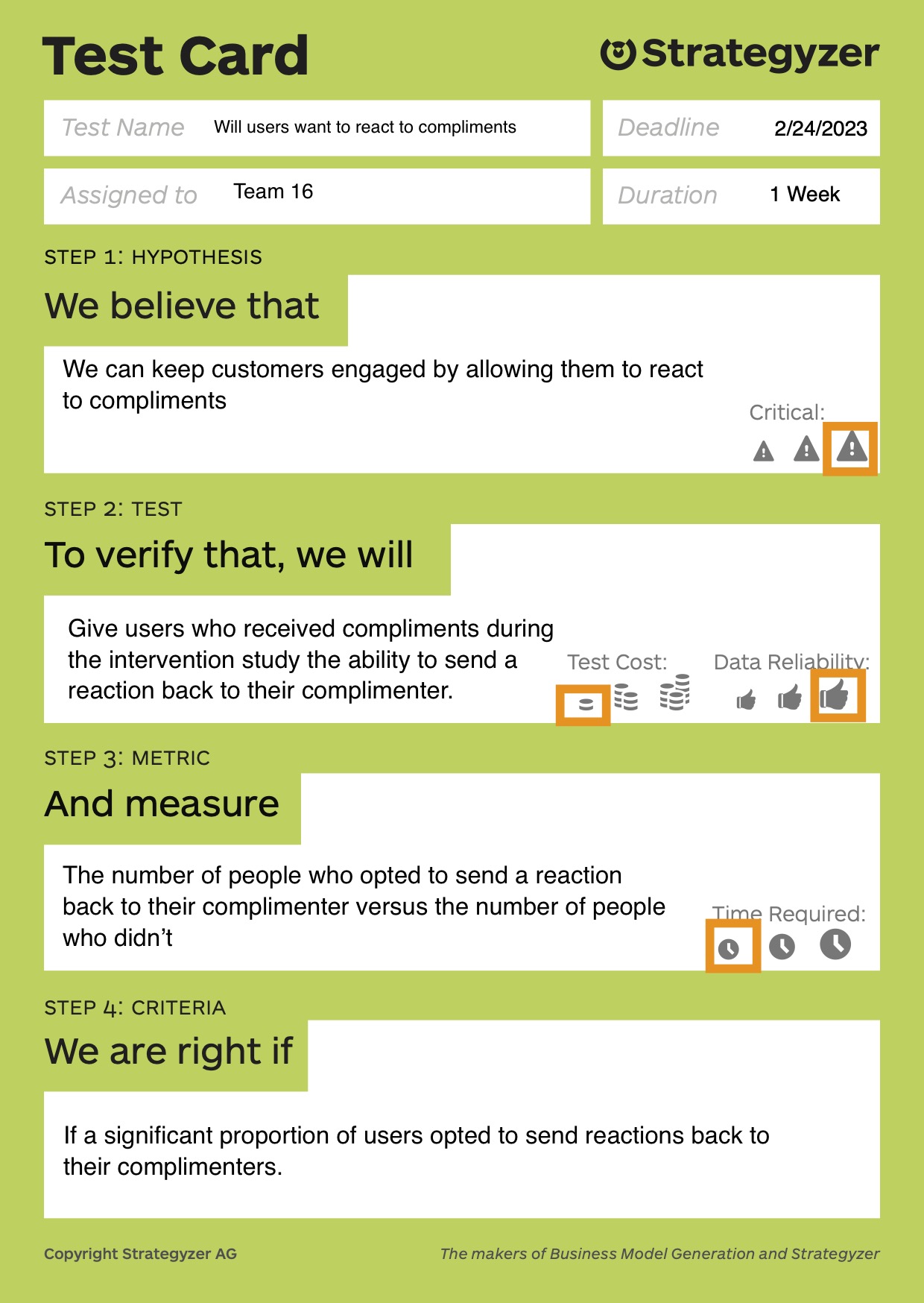
Most messaging platforms such as iMessage, Instagram, and Facebook Messenger have some form of reactions to a text. In iMessage, you can explicitly and visually link your reply to the original message, and in all three platforms you can react quickly with an emoji, or opt for a full reply. During this assumption test, we tested our hypothesis that we can keep customers engaged by allowing them to react to compliments. To test this hypothesis, we gave users the opportunity to respond to compliments they received during our intervention study. We observed the user’s decision to react to a compliment, the type of reaction (short, single word, or emoji, versus long form conversation), and how the original complimenter reacted to the reaction. From this data, we synthesized our findings that compliment reactions are an integral part of the interaction for both the giver and the receiver. Reacting to a compliment is a natural progression in social interaction between two users.
We recruited participants from our intervention study who had both sent and received a sufficient number of compliments over the week. Since we still had the compliment data, we were able to run tests where we compiled all the compliments received by an individual over the course of a week and present the user the option of reacting to a compliment in any form they wish. This test was conducted on 4 participants, all of whom opted to send a reaction back to their original complimenter. Most participants (3) noted that it seemed most natural to have a short form conversation following the compliment, while 1 stated that they prefer the emoji based system used in iMessage.
From our results, we see that our hypothesis stands and we have sufficient evidence to develop a feature to allow users to react to compliments they receive. Users will be able to react with a simple emoji, or with a blurb of text. Both the giver and the receiver will be able to immediately see the reaction.
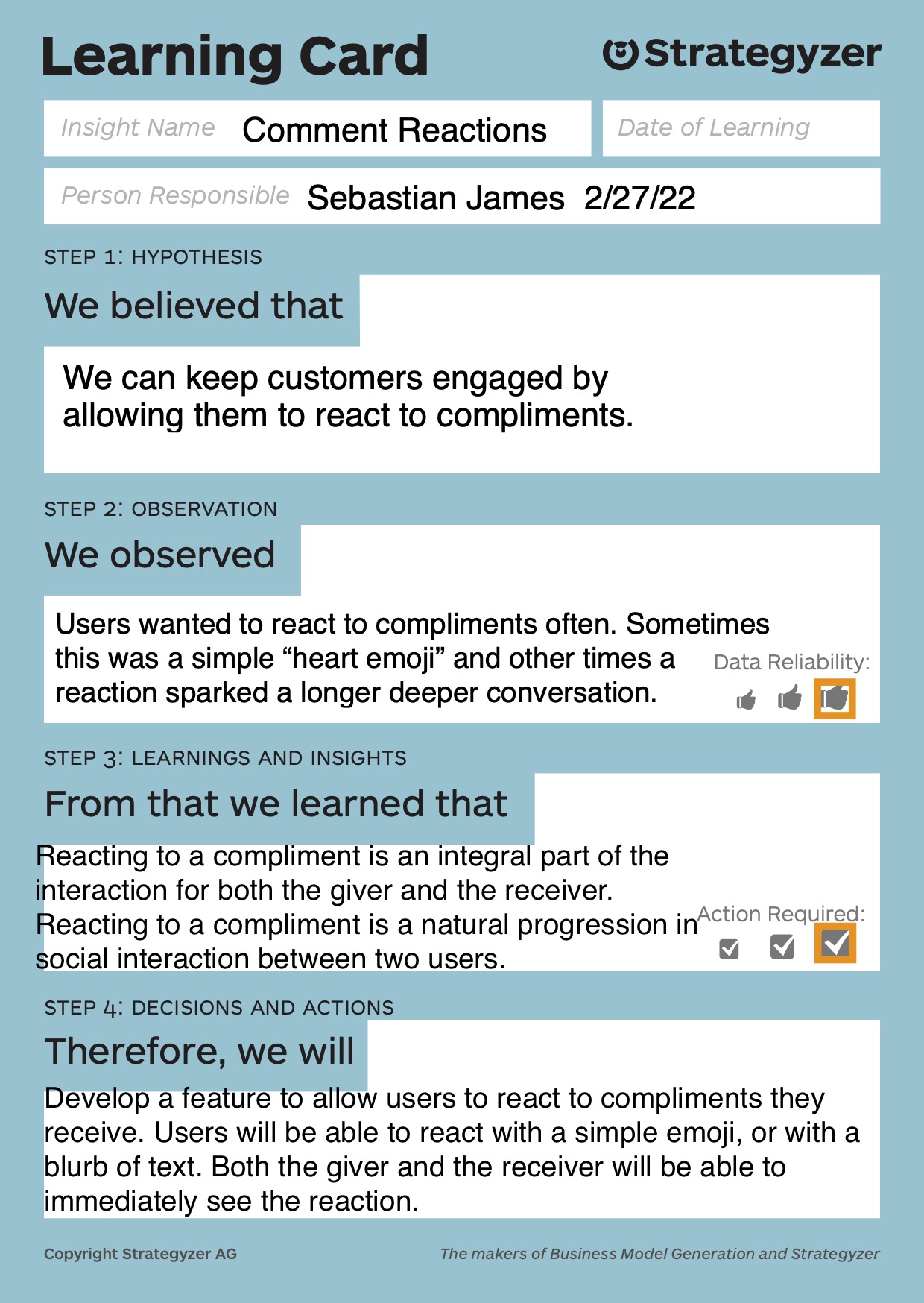
Public Compliment Wall
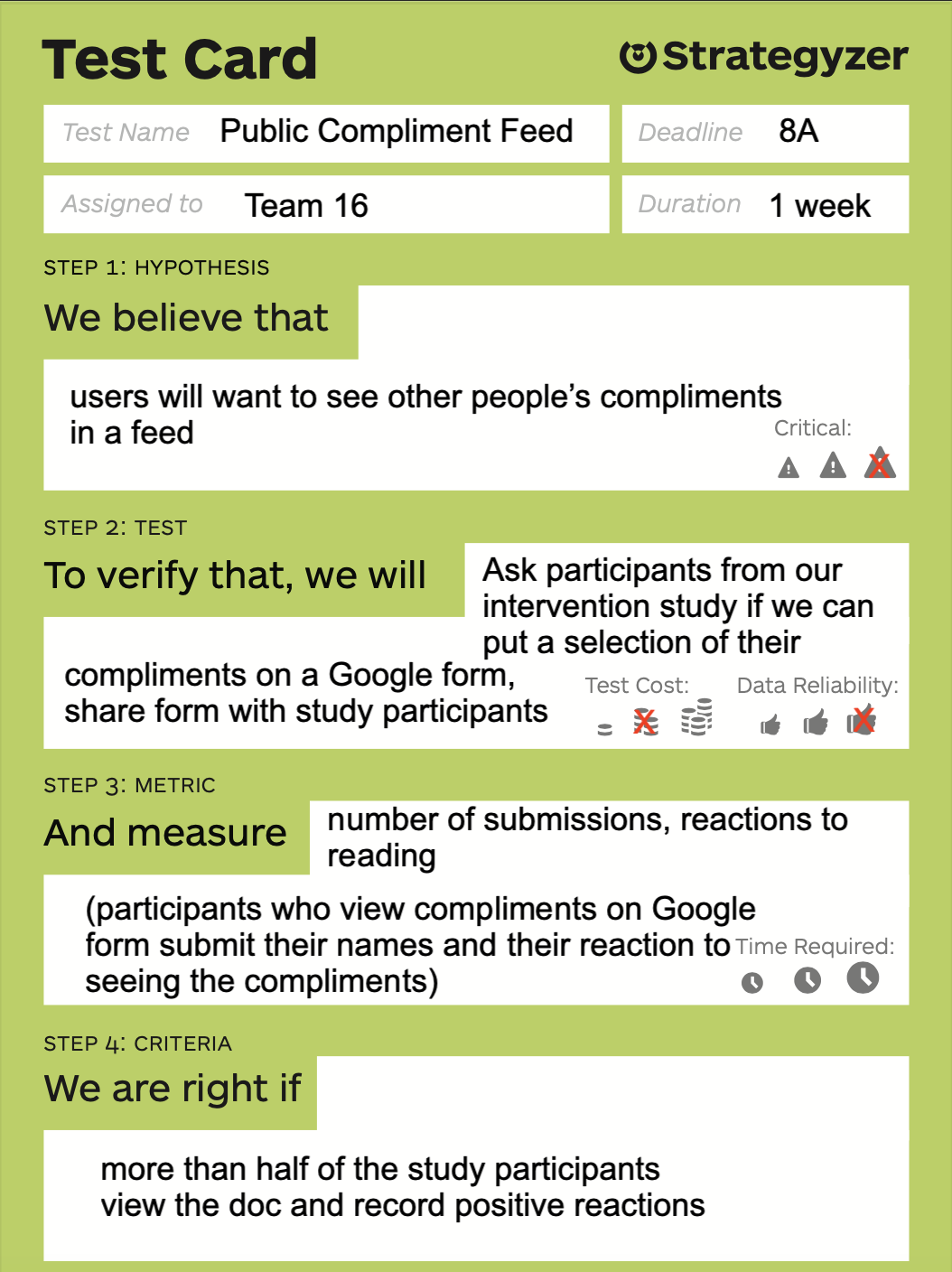
To see a more detailed overview of this core assumption, refer to our 6B blog post here.
Given that we already have a set of study participants and their compliments from our intervention study, we used this same group of 16 individuals to run this assumption test. For details about the composition of this group, refer to our 5A blog post here. Having individuals who are all relatively a part of the same friend group participate in this test also better replicates our public compliment wall where users would be able to see compliments that their friends posted about other friends. Users are also more likely to care about compliments that are about people they may know and/or are sent by people they know, rather than strangers, so our intervention study group was the natural choice.
We first looked through the compliments that were sent in during the intervention study and hand-selected compliments that stood out to us as especially thoughtful and kind. For each selected compliment, we then reached out to the complement sender and compliment receiver to ask for their consent in sharing this compliment with the rest of the study participants. We then added all of the consented compliments to a Google Form where we asked users who view the compliments to submit their name and their reaction to reading the compliments. This Google Form was then released to the entire intervention study group. The form can be viewed here.
Our learnings are synthesized in the learning card below.
